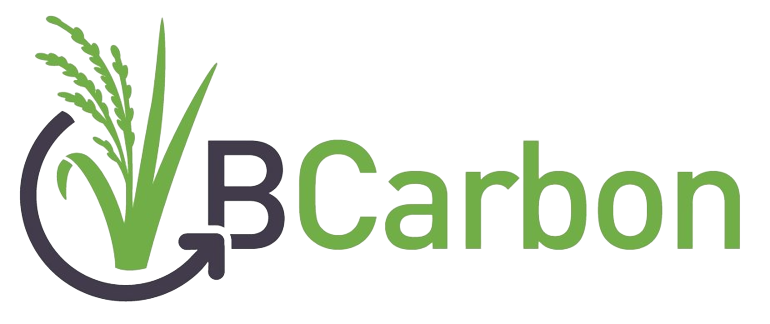EasyPost's Carbon Offset Projects
EasyPost has a diverse portfolio of carbon offset projects that take advantage of the latest innovative carbon reduction technology. We focus on ensuring all carbon offset projects follow the industry's most trusted and modern carbon reduction standards. All carbon offset purchases made from customers will be distributed to the projects in the portfolio described below.

The industry's most trusted and modern standards




Grassroots Carbon Regenerative Grazing

Grassroots Carbon partners corporate carbon buyers looking to reduce their carbon footprint with landowners who are engaged in regenerative practices in a win-win for buyers, landowners, and the environment. Over 40% of US land area is devoted to grazing animals. With hundreds of millions of acres of degraded grasslands, we're sitting on top of a massive carbon storage solution with the capacity to store over 1 billion tons of CO2 every year.
By mimicking the way bison graze on an open prairie, land managers can restore the native ecosystem on their land, stimulating the increased growth of native prairie grasses. The key to unlocking this carbon storage solution is bringing these prairie grasses back to health. These deep-rooted plants capture and store atmospheric CO2 and transfer it deep into the soil, where it remains so long as it is not tilled. Natural photosynthesis pulls carbon out of the atmosphere and into healthy soil. The healthier the soil, the more carbon that can be stored. Grassroots Carbon offers the most rigorous, measurement-based certified soil carbon storage credits on the market: BCarbon credits. All BCarbon credits are backed by real measurements taken according to international standards and certified by an independent third party. No hypothetical baselines or what-ifs.
Big River & Salmon Creek Forest Protection

The Big River and Salmon Creek forests are owned and managed by The Conservation Fund (TCF). TCF is a non-profit land conservation organization whose mission is to protect and conserve land in the USA and also to promote and sustain rural economies. TCF acquired the Big River and Salmon Creek tracts from Hawthorn Timber Company in late 2006. Big River is 11,707 acres and Salmon Creeks is 4,204 acres for a total of 15,911 acres for the project.
Both tracts are located in Mendocino County, California near the town of Fort Bragg. The region experiences a Mediterranean climate characterized by a pattern of low-intensity rainfall in the winter and cool, dry summers with coastal fog. The properties are dominated by relatively young redwood, Douglas fir, and tanoak and have approximately 37 miles of fish-bearing streams. A richly productive ecosystem supports significant wildlife, including many imperiled species such as coho salmon, steelhead trout, and northern spotted owls. From the turn of the century to the project start date, the forests were heavily managed for timber production that removed almost all of the old growth and damaged streams with ground-based harvesting practices. The average ages of measured project site trees within the different watersheds range from 38 to 58 years old. The project is credited for carbon sequestration in biomass under California's Compliance Offset Program, and the forestlands are certified under both the Forest Stewardship Council and the Sustainable Forestry Initiative for sustainable long-term harvesting practices.
Salto Pilão Hydroelectric Plant

The Salto Pilão Hydropower Plant Project consists of a run-of-river hydropower plant with a small reservoir of 0.15 square kilometers and an installed capacity of 191.88 MW. The plant is located between the cities of Lontras, Ibirama, and Apiúna in the state of Santa Catarina, South Region of Brazil.
Salto Pilão hydropower plant (Portuguese: Usina Hidrelétrica Salto Pilão, UHESP) is owned by an association of several companies called Consórcio Empresarial Salto Pilão. The white objective of the UHESP is to help meet Brazil's rising demand for energy due to rapid economic growth and to improve the supply of electricity while contributing to environmental, social, and economic sustainability. UHESP provides jobs in the region and increases the share of renewable energy in Brazil's total electricity consumption. In the absence of the project, electricity would be generated by the operation of grid-connected power plants, including fossil fuel power plants and hydropower plants with large reservoirs. The implementation of UHESP, a low-impact run-of-river plant, ensures renewable energy generation, reduces the national electric system demand, avoids negative social and environmental impacts caused by the construction of large capacity hydropower plants with expansive reservoirs and fossil fuel-fired thermo power plants, and drives the regional economy, increasing quality of life in local communities.
Uganda International Small Group Tree Planting

The International Small Group and Tree Planting Program (TIST) is a combined reforestation and sustainable development project in Uganda, carried out by subsistence farmers. These farmers receive training from TIST to plant trees on their land, as well as a share of the associated carbon credit revenue.
TIST empowers "Small Groups" of 6 to 12 subsistence farmers in Uganda—as well as India, Kenya, and Tanzania—to combat the devastating effects of deforestation, poverty, and drought. Combining sustainable development with carbon sequestration, TIST supports reforestation and biodiversity efforts, while carbon credit sales generate participant income and provide project funding to address agricultural, HIV/AIDS, nutritional, and fuel challenges. As TIST expands to more groups and more areas, it ensures more trees, more biodiversity, more climate change benefits, and more income for more people. TIST also provides an administrative backbone that supplies training in building nurseries, planting trees, conservation farming, building fuel-efficient stoves, and preventing malaria and HIV/AIDS. This is achieved, in part, by a two-way communications network that includes newsletters, weekly meetings at the Small Group level, monthly training meetings, periodic national seminars, and an award-winning monitoring system via hand-held computers and GPS. Currently, 1,662 members in 291 Small Groups are registered in the TIST program in Uganda, covering 1,000 project areas and 777.1 hectares.
Ship carbon neutral today!
The Carbon Offset API is the most streamlined way to turn your shipping operations green. We may add or remove projects from the portfolio when existing projects in the portfolio reach their capacity for carbon reduction. The API is completely free to access and can be found within our API Documentation. Sign up for a free EasyPost account to get going today!
